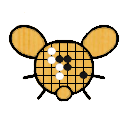This is a game played on June 19 between Ueno Asami (as black) and Fujisawa Rina (as white). At move 159, Asami cut with K14.
It involves a followup of the life and death of the white group M10, and most human players would be able to judge it, but AI (from Golaxy to Katago) all seem to deem it “alive” and continue to fight without securing the life of that group first. While a human player can read out the sequence like Rina did during the game and make the right choice.
But it takes like 10k+ playouts before AI realize the K14 cut is a very good move, and (with few playouts AI even judges K14 as a blunder). And it takes millions of playouts before AI realizes the M10 white group is in trouble.
What other AI blindspots and hallucinations have you seen in real games?


Ah, I see what you mean now. I can confirm at lower visits, KataGo does indeed want to push and cut, and this is a problem. For what it’s worth, at higher visits KataGo sees the problem with the push and cut at wL11, and suggests other moves instead, such as wK13, or tenuki-ing and playing wC9.
I think that wN5 played in the game is premature though, the squeeze play you described would be suicidal for black to try without the push and cut due to the aji at R8.
I showed this position to lightvector (the author of KataGo) on the Computer Go Discord, and he had this to say: